At the National University "Yuri Kondratyuk Poltava Polytechnic", fire safety measures are systematically carried out: at the beginning of the new academic year, fire safety training is held annually for new residents of dormitories, fire extinguishing skills and the use of fire extinguisher are practiced. This year, the Department of Labor Protection and the Security Department of the university jointly with the State Emergency Service of Ukraine in the Poltava region expanded the training and briefing program.











The morning of October 7 began at the campus of the Poltava Polytechnic with an educational air raid alarm at 08:00. Residents of the dormitories went to shelters at the signal, where inspectors of the Emergency Prevention Department of the Poltava district administration of the of the Main Directorate of the State Emergency Service of Ukraine conducted a briefing on the rules of behavior and the algorithm of actions during an air raid alarm, evacuation, staying in storage facilities and shelters in the event of an emergency.
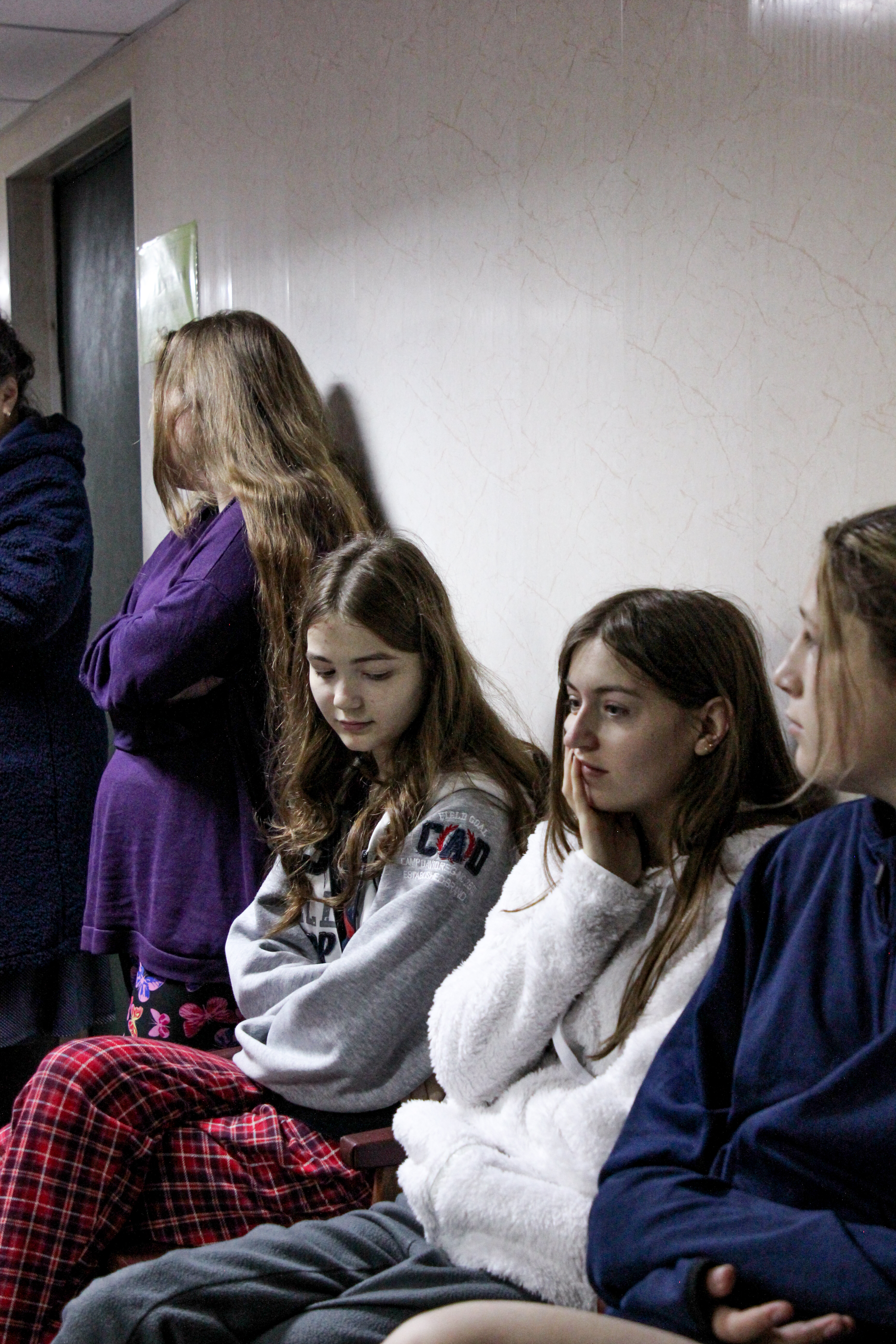
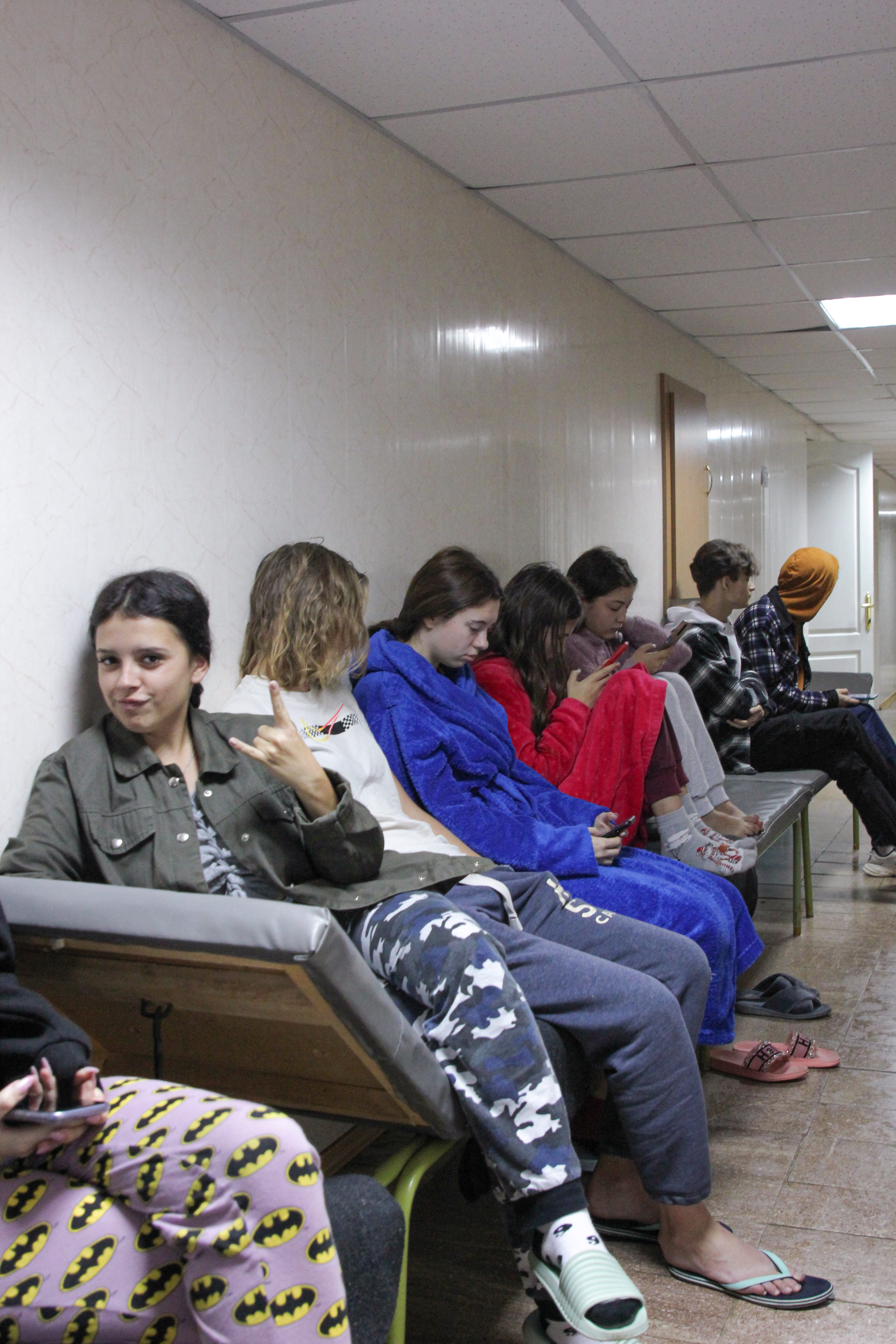
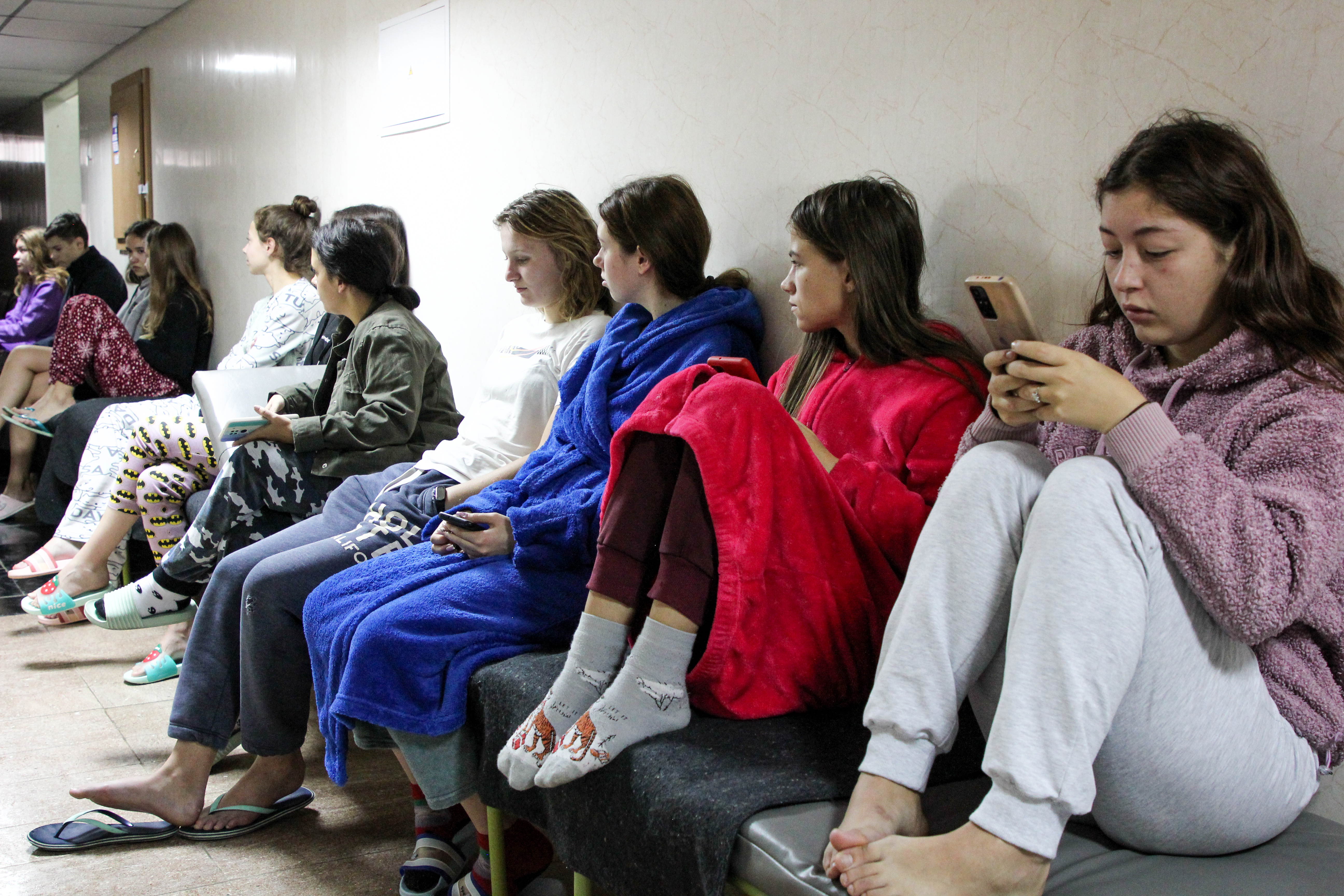
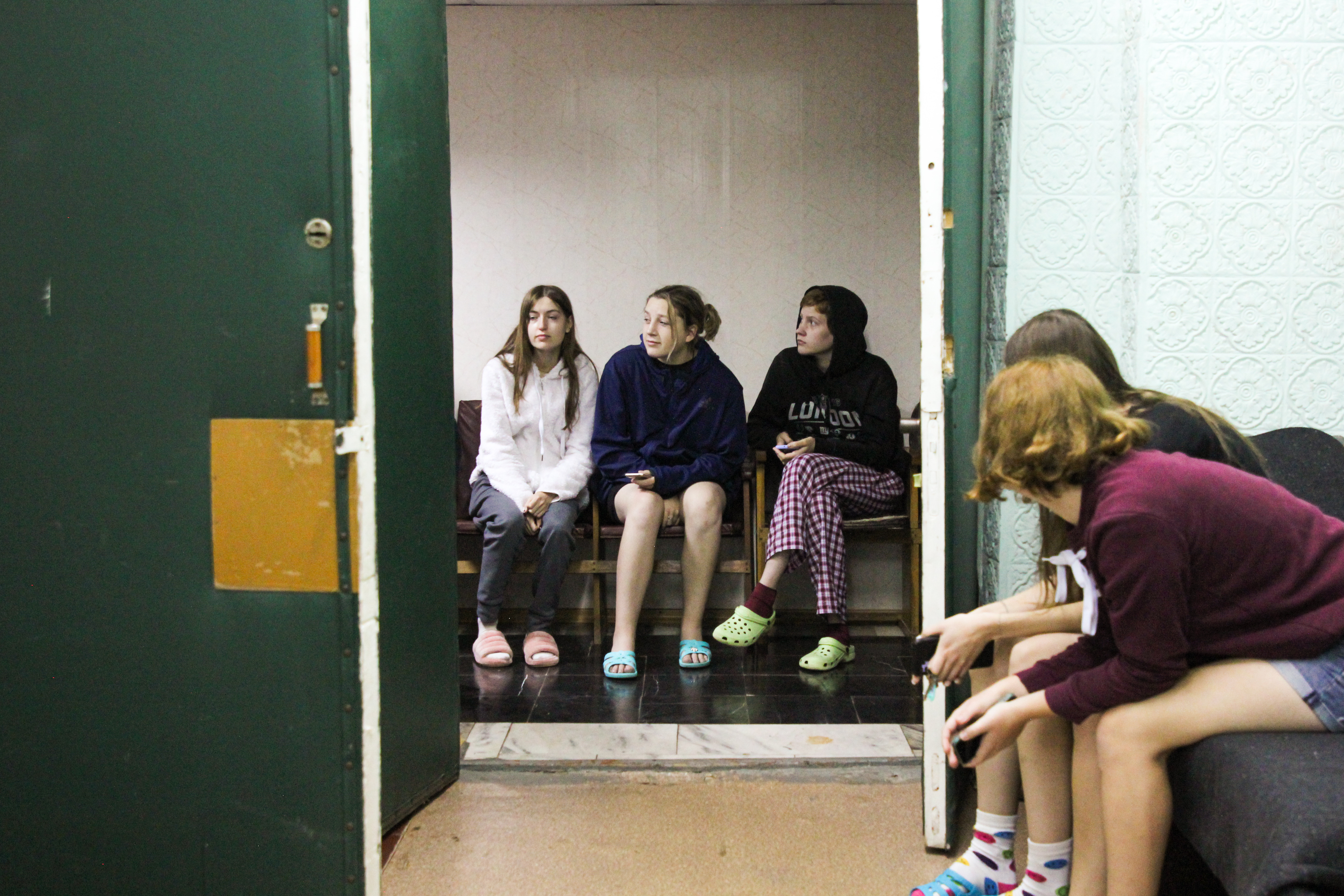
The rescuers reminded students about different types of alarms (air, missile, chemical and radiation) and why it is not always advisable to go down to the simplest shelter.
For example, in the case of emissions of chemicals that are heavier than air in density (chlorine is a poisonous gas of yellowish-green color, has a sharp irritating odor, heavier than air), they accumulate in low-lying areas of the terrain, basements and on the lower floors of buildings. Therefore, the safest places are the upper floors of tall buildings. Conversely (for example, ammonia is a colorless gas with a suffocating effect that has a pungent characteristic odor, twice as light as air), chemicals that are lighter than air quickly rise into the upper layers of the atmosphere and can enter the rooms on the top floors of apartment buildings. It is necessary to leave the pollution zone in the lowlands and in the direction perpendicular to the wind direction to the shelter.
If during a real danger a person is in an open area, it is recommended to immediately lie down on the ground, if possible in deeper places (ditches, pits, ravines, etc.), cover the head with some things or hands, while grouping the body in such a way as to avoid injury to the inguinal artery from debris of building structures, etc. In case of damage to the inguinal artery, it is necessary to provide first aid to the victim as soon as possible, stopping the blood with the help of a tourniquet (turnstile).
In the case of artillery or mortar shelling, it is necessary to tightly cover the ears with hands, opening the mouth to equalize the pressure. Sound (acoustic shock) can lead to ruptures of blood vessels and eardrums.
Also, the inspector reminded students about the importance of preparing an "alarm suitcase", having discussed with the students which set of necessary things can increase the chances of survival. Among them: grocery set, documents, a telephone, a standard set of home first aid kit, warm clothes.

The inspector emphasized that non-compliance with certain rules of the educational institution entails administrative responsibility and the imposition of fines. The amount of the fine at the moment may be 1,700 hryvnias. But following the rules is, first of all, necessary in order to protect yourself.
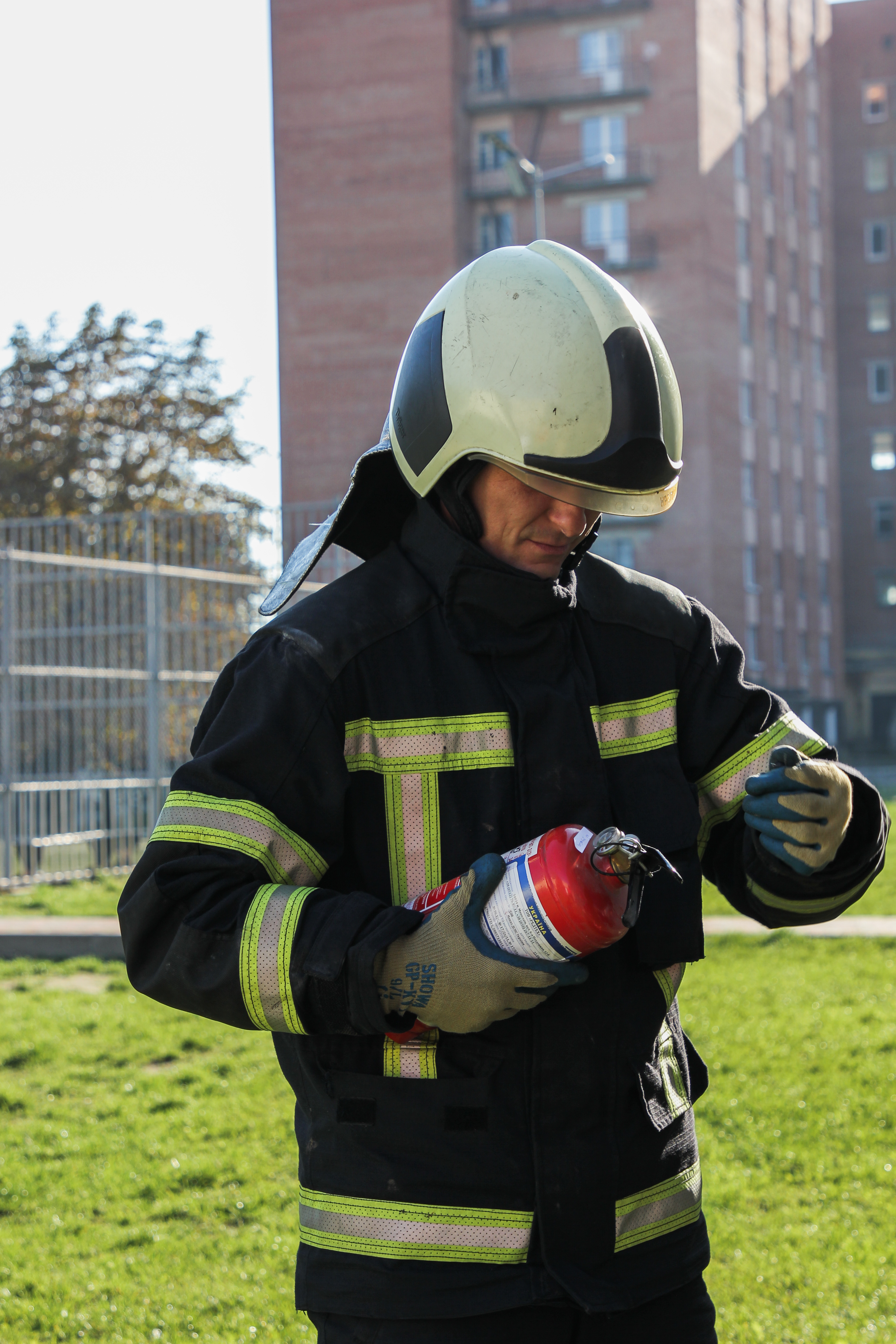
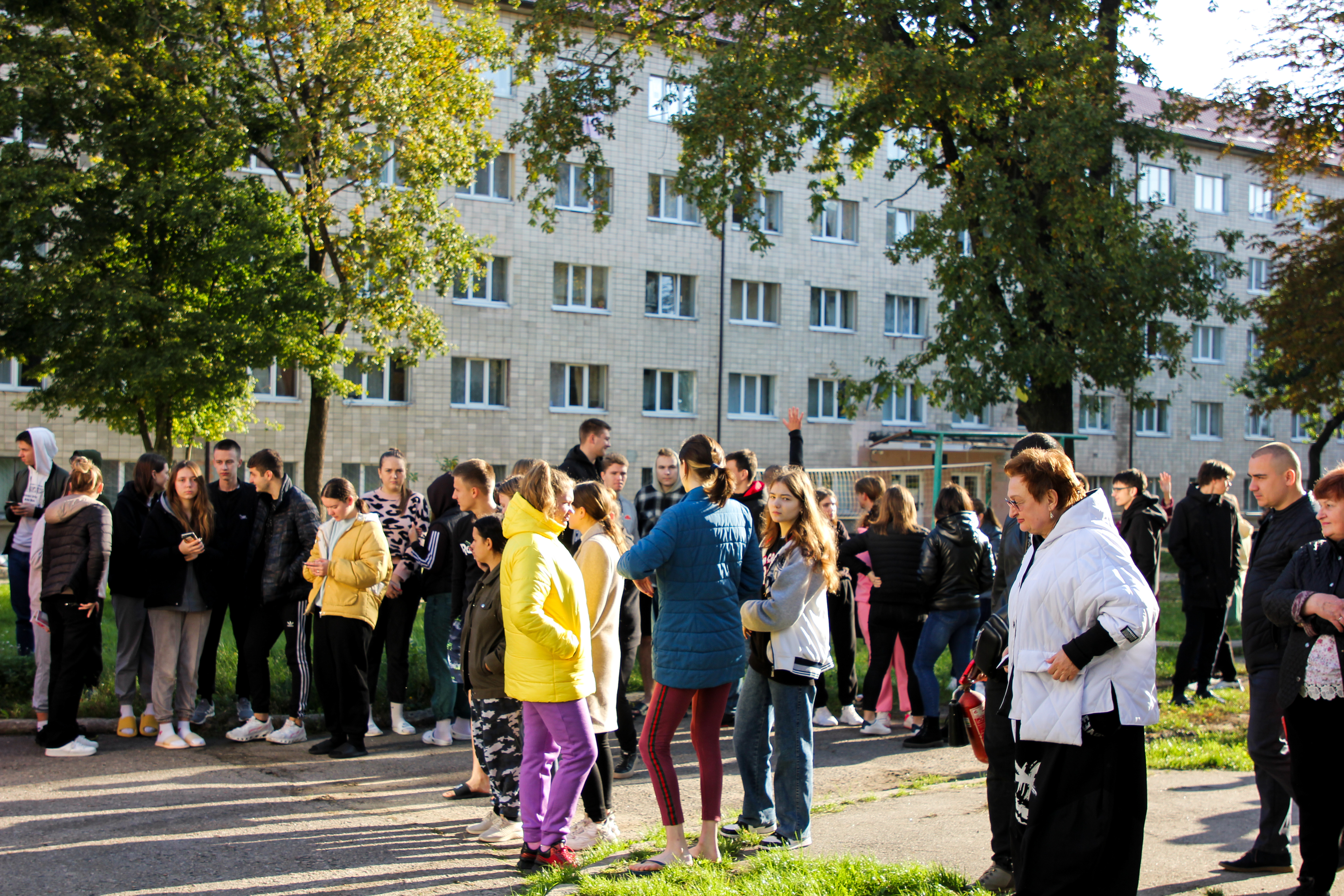
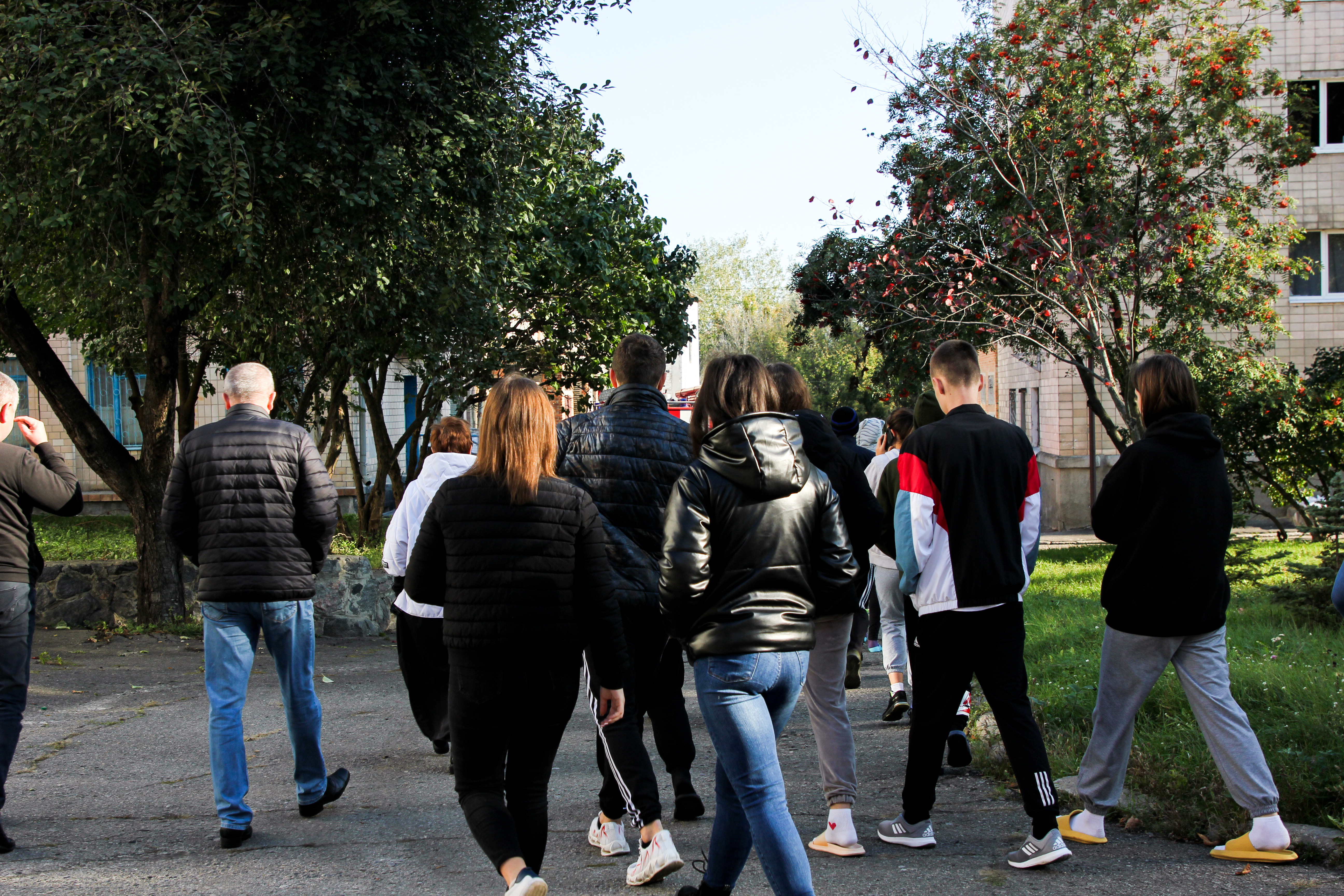

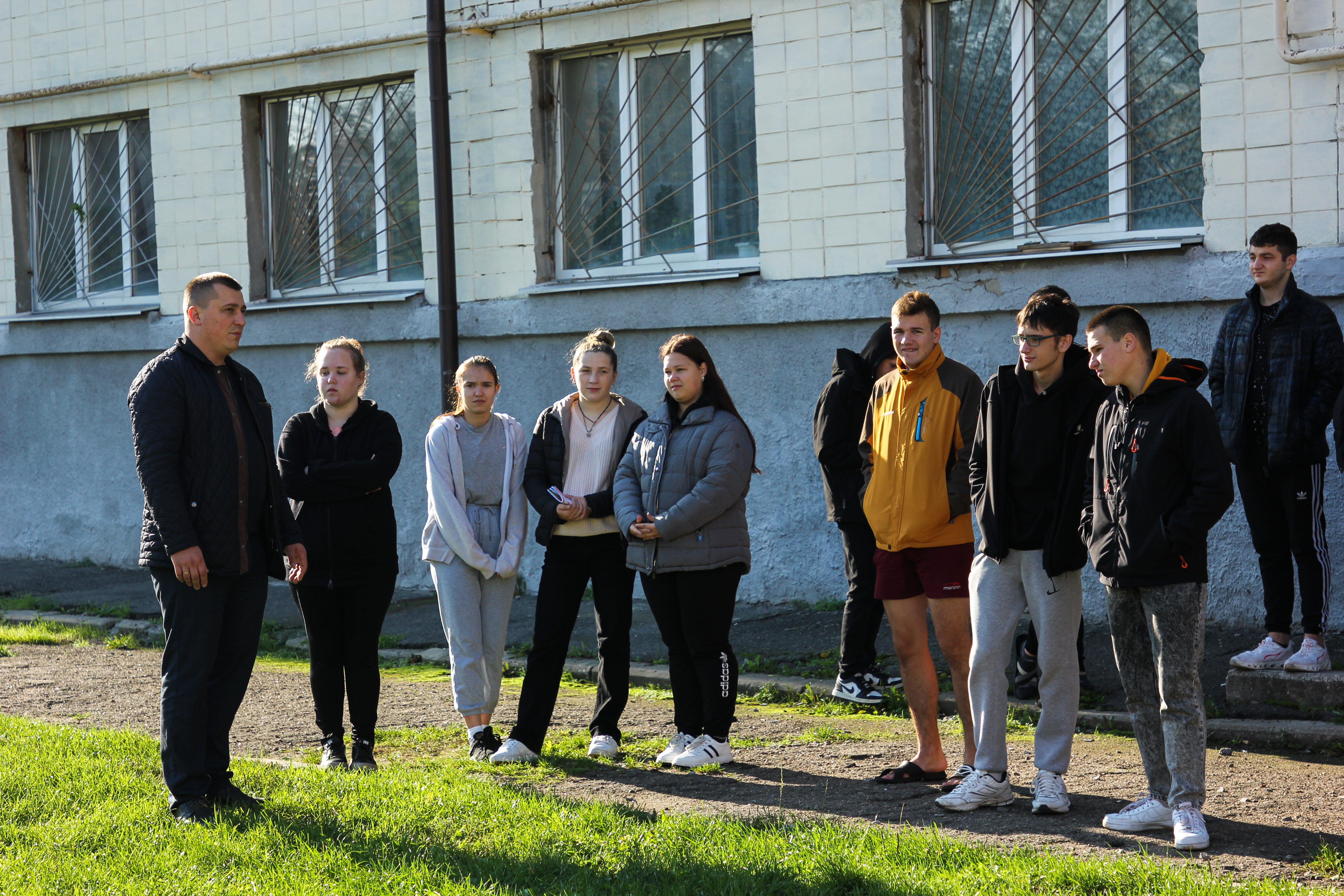
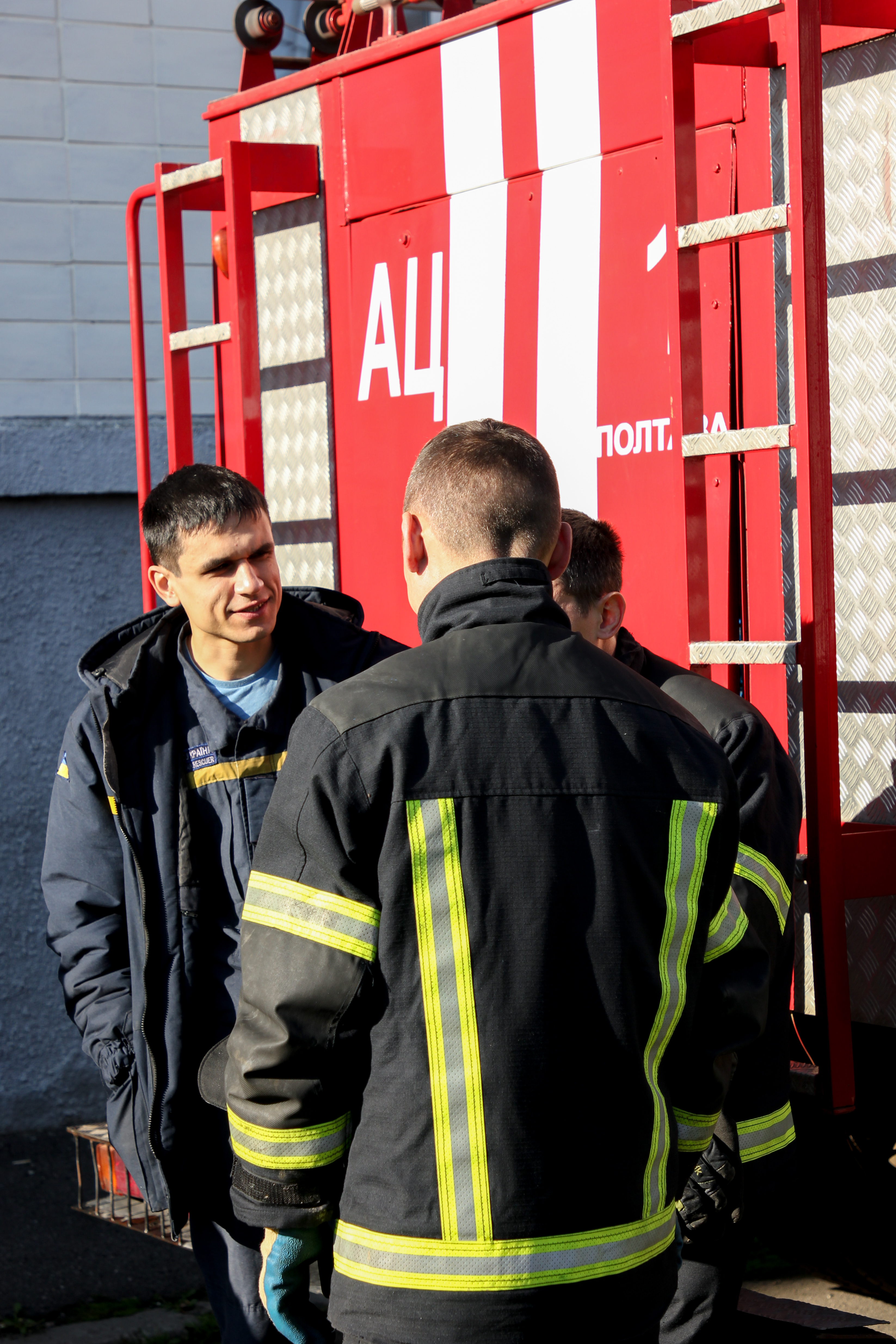
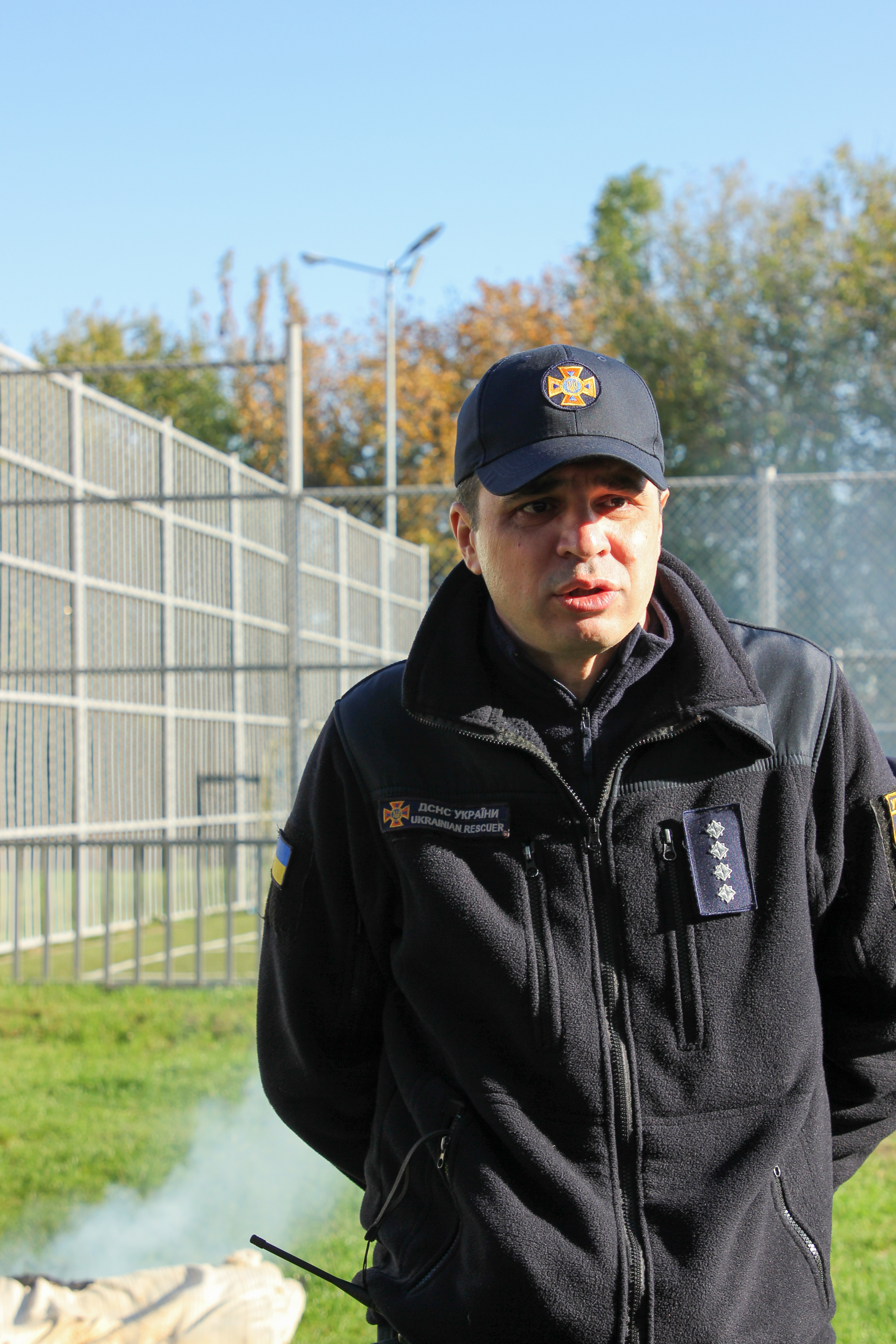
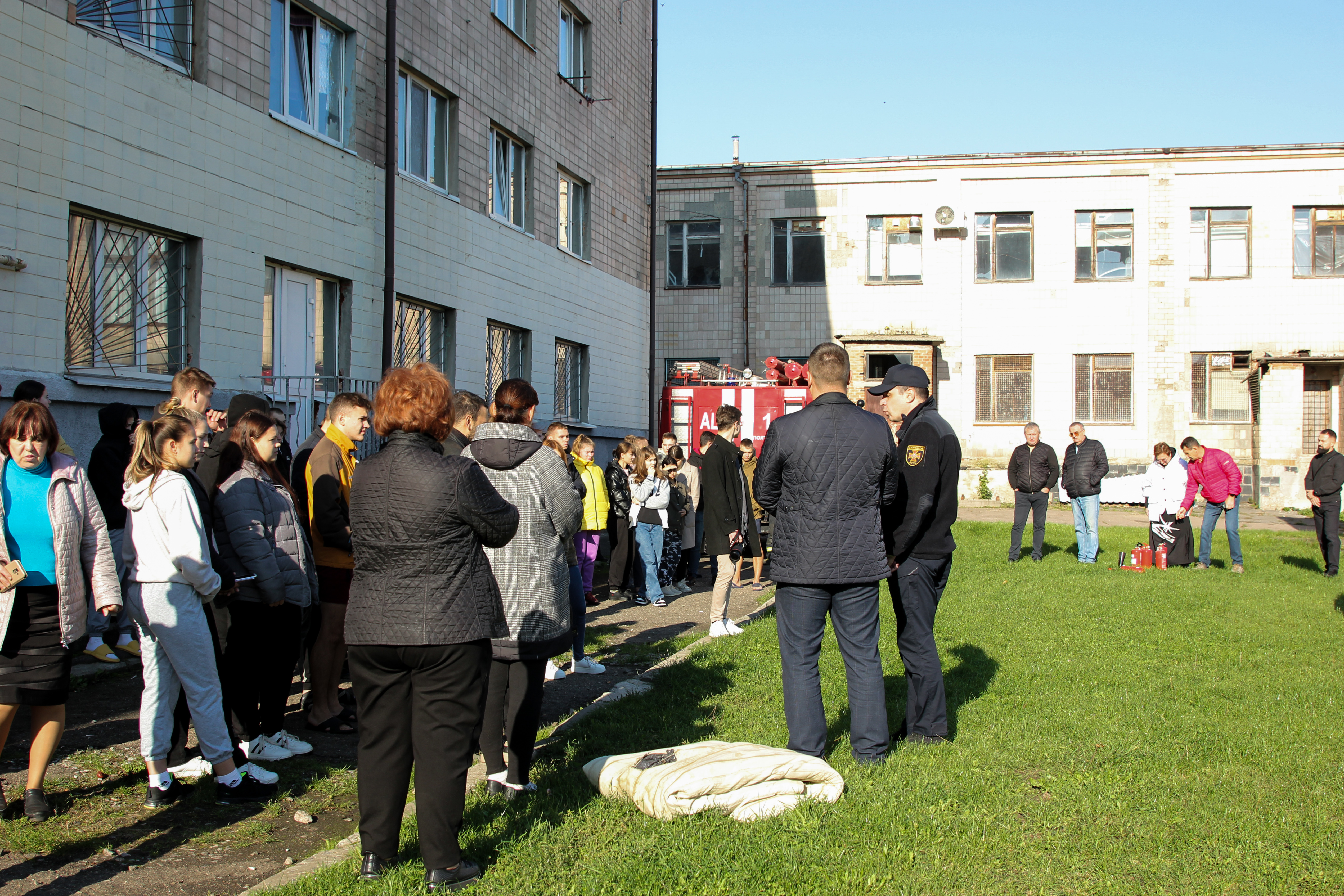

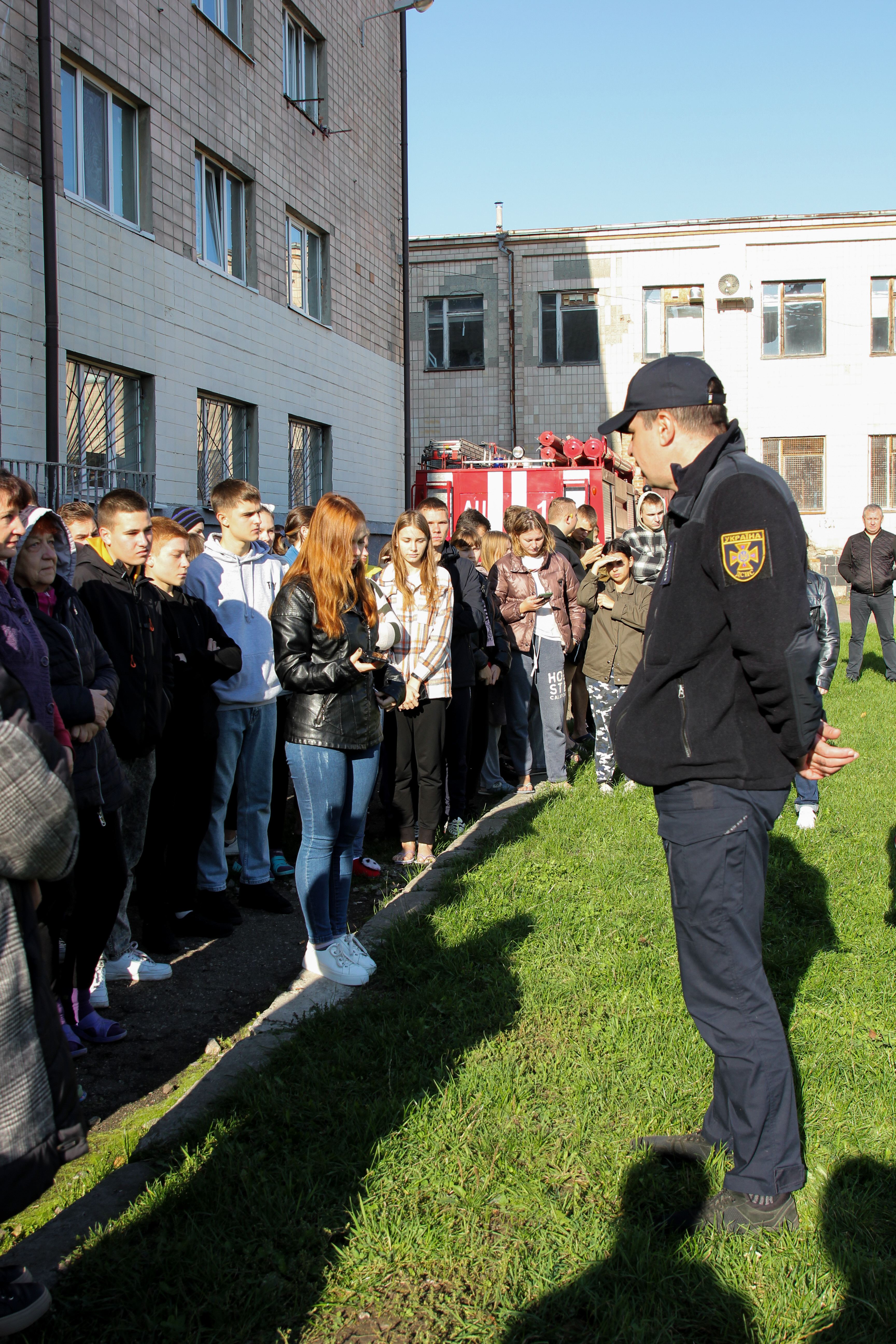
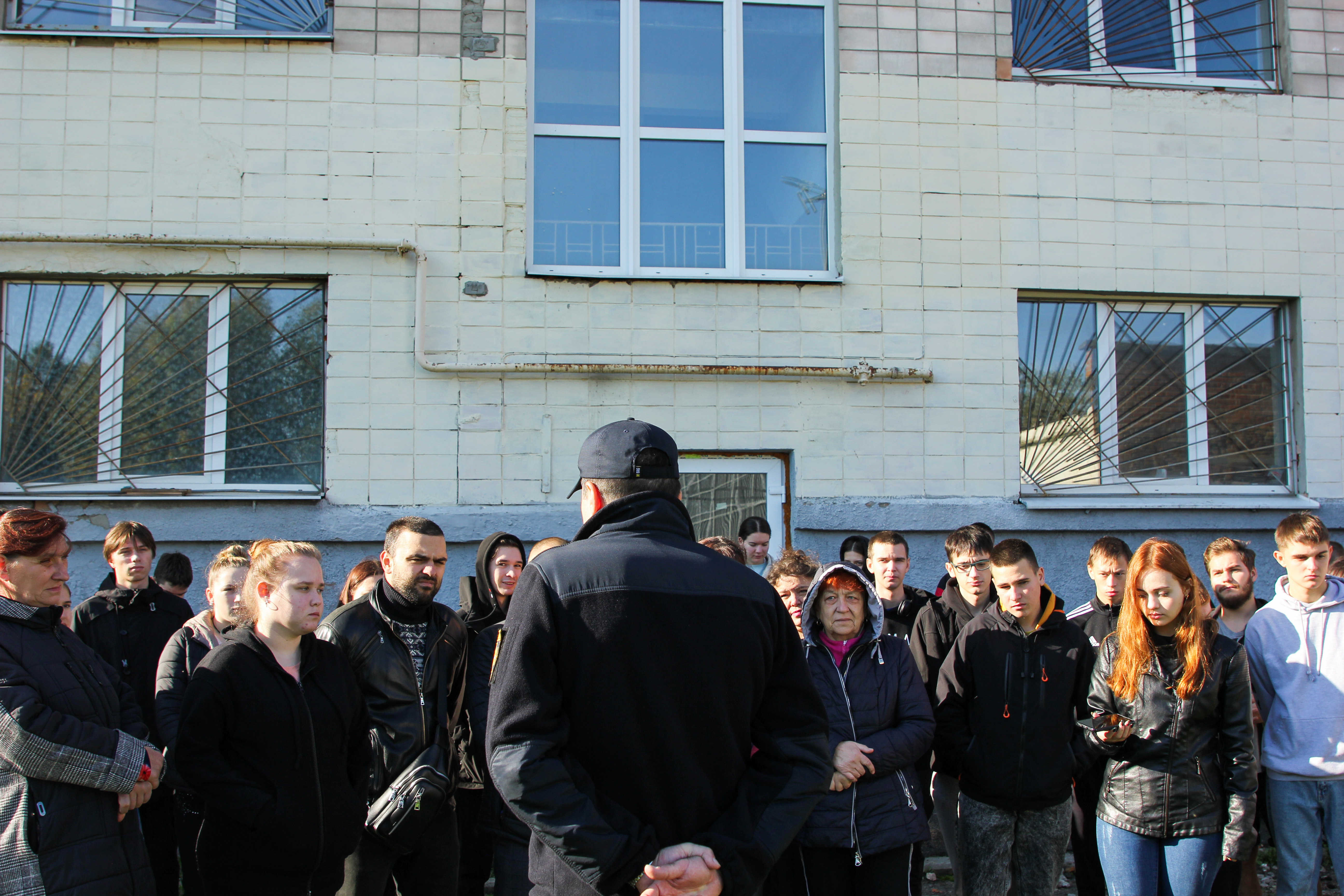
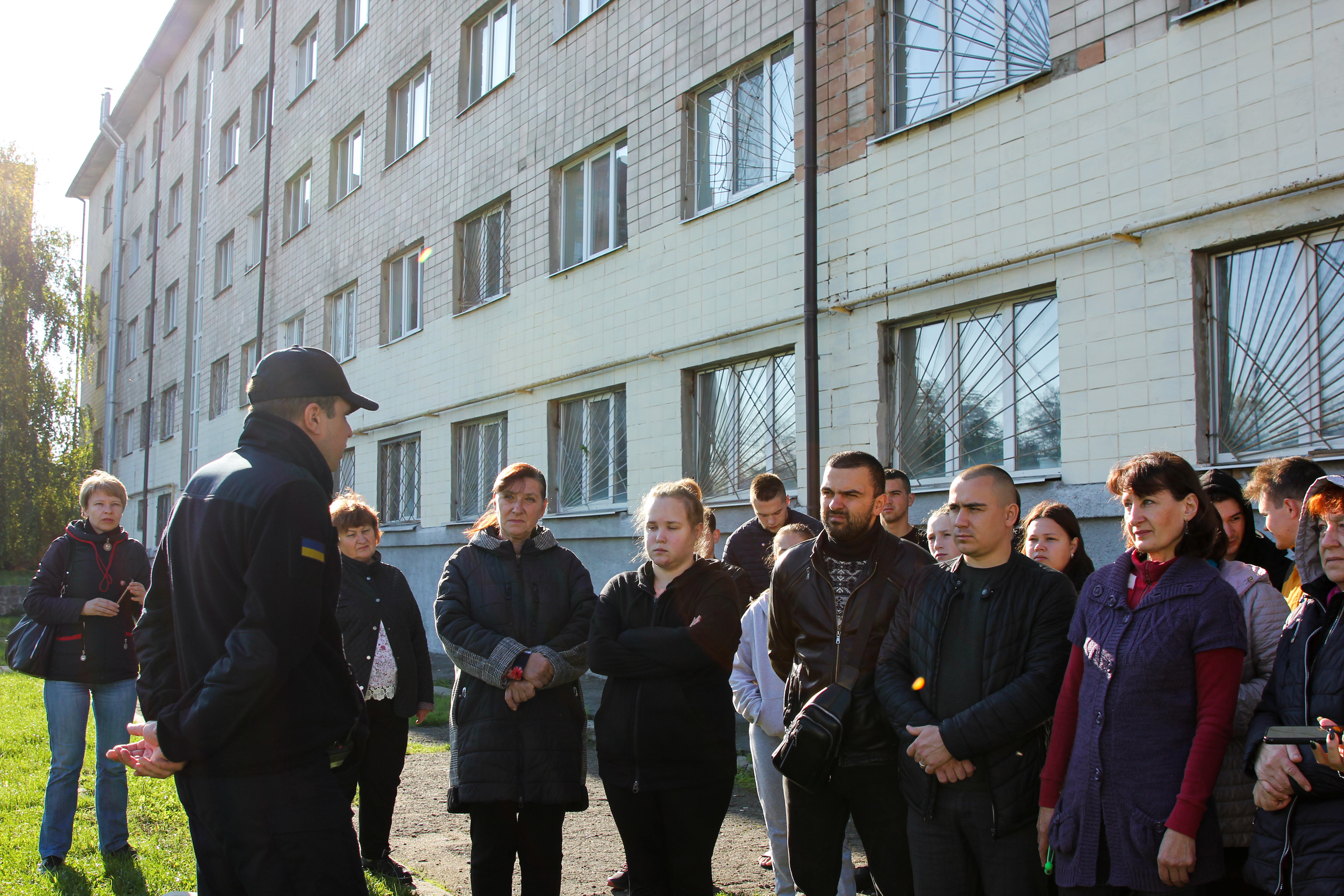

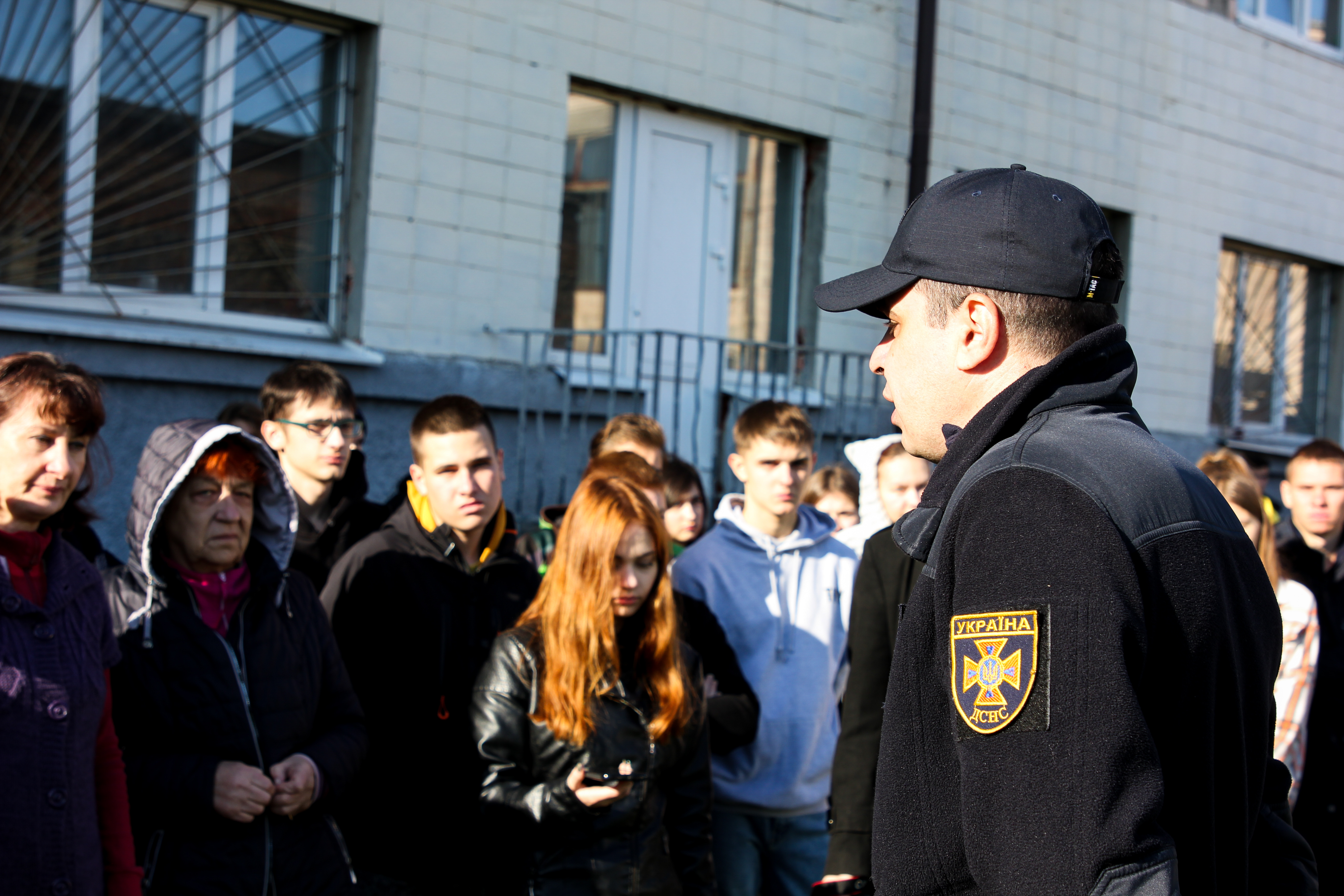


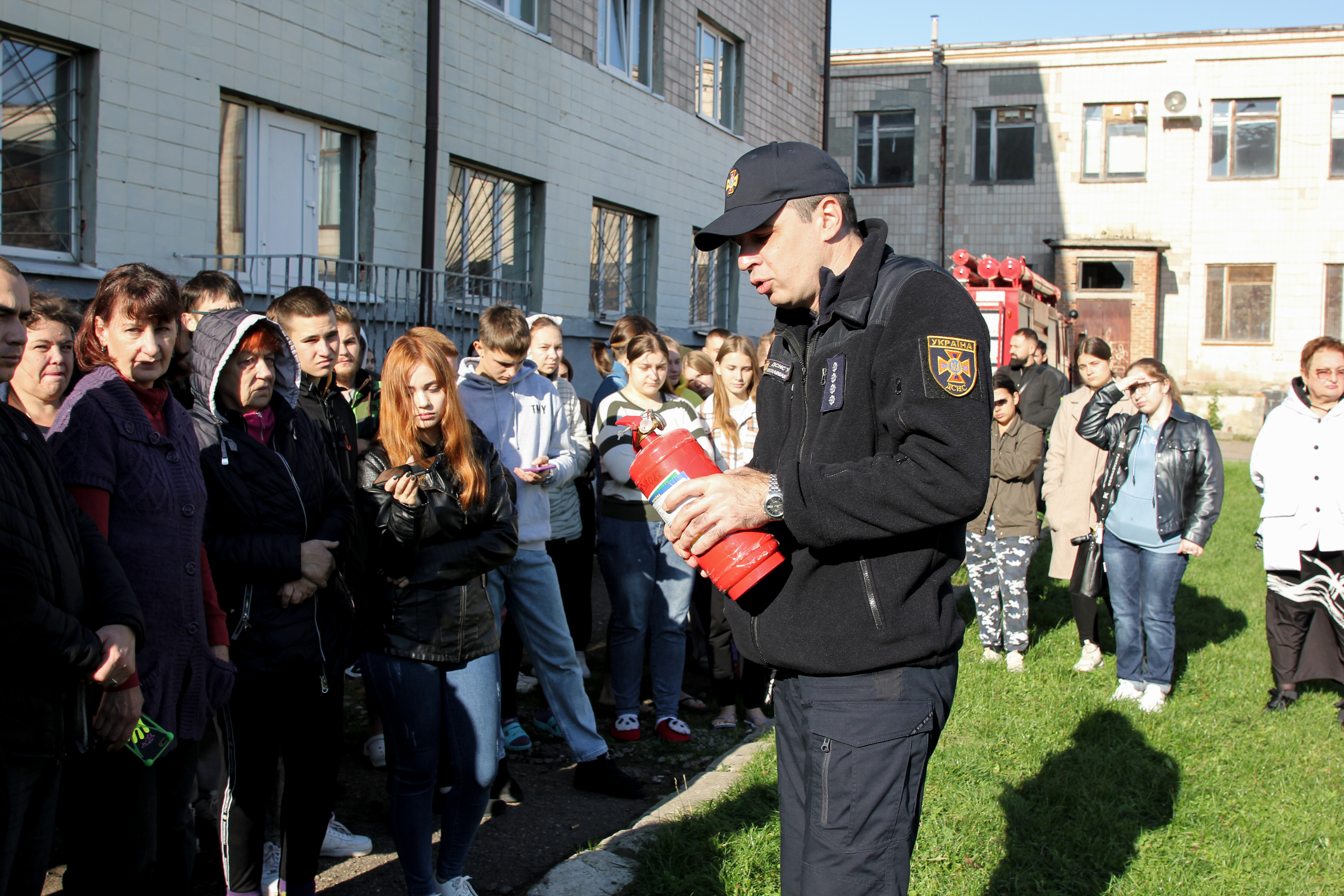

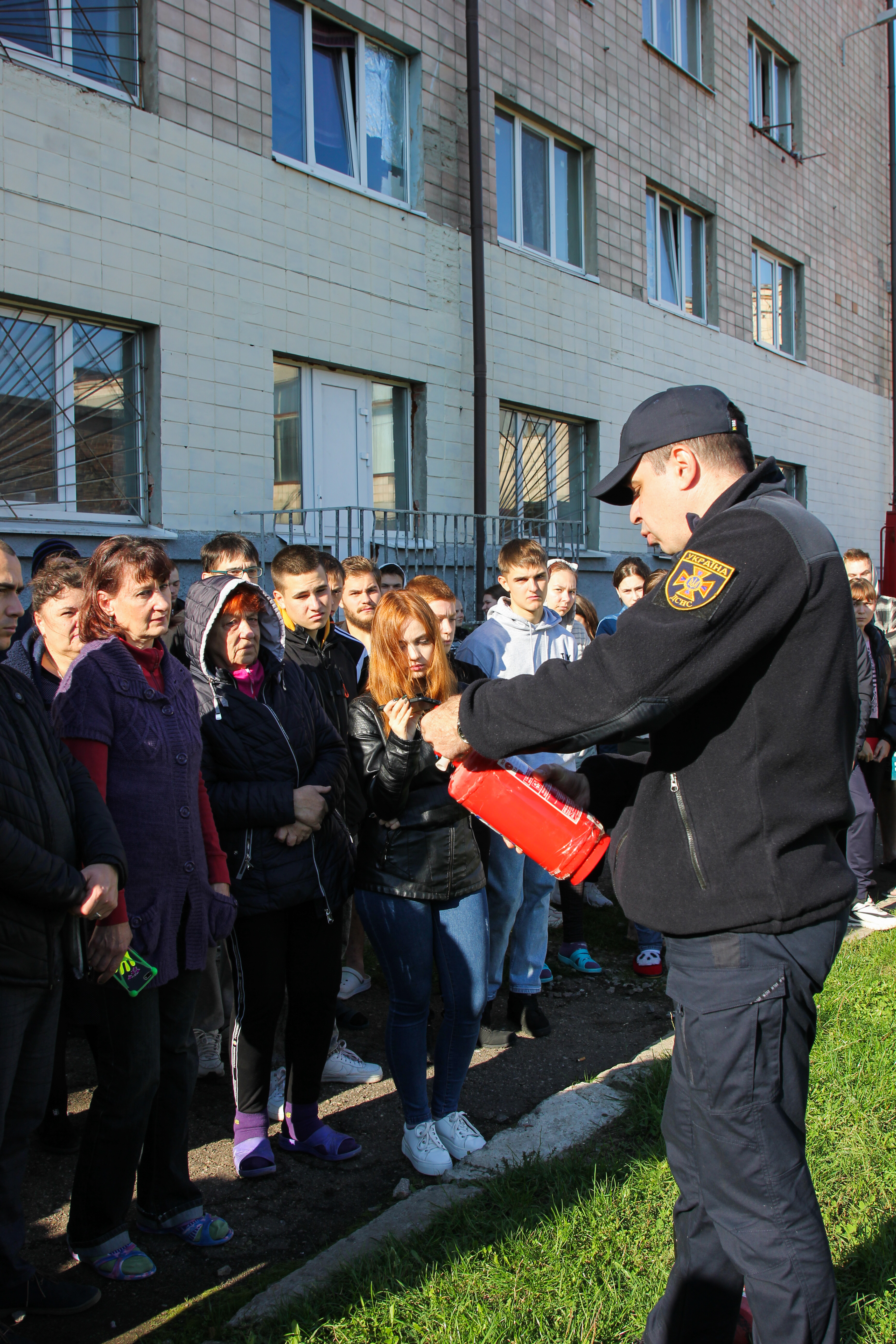

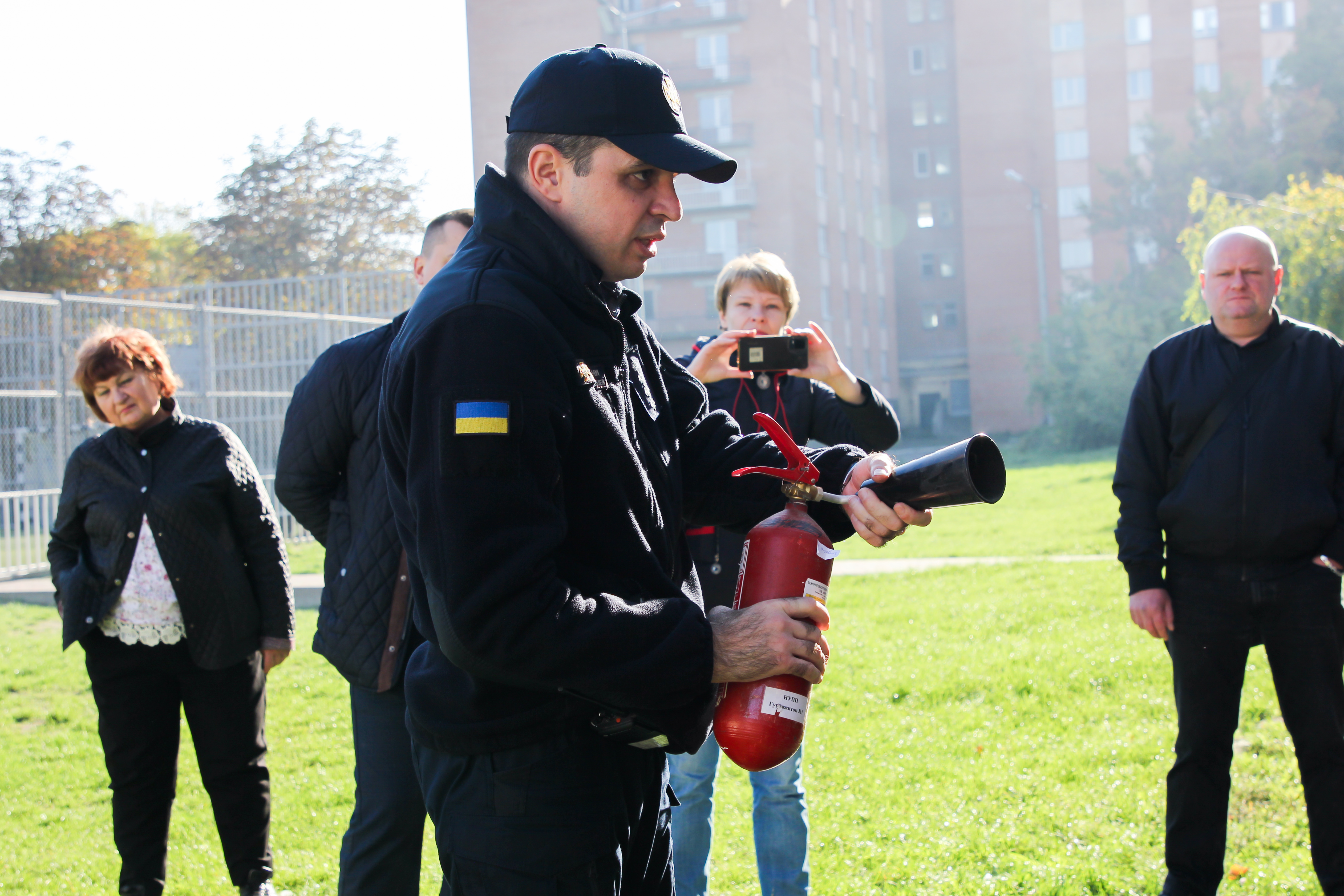



After leaving the shelter, there was a training fire alarm. Employees of the First Fire and Rescue Unit of the 1st State Fire and Rescue Squad (Poltava) conducted a comprehensive briefing and workshop on the use of primary fire extinguishing equipment. The briefing consisted of three parts: evacuation, use of fire extinguishers, explosive objects.
According to the rules of operation and typical standards of ownership of fire extinguishers, buildings and premises of various purposes must be equipped with portable or mobile fire extinguishers. Fire safety engineer Vladyslav Zabedeiko commented that the university makes sure that fire extinguishers are tested on time (once a year), maintenance work on fire extinguishers is carried out in a timely manner, which keeps these protective devices in working condition and increases their service life.
The most common, due to their versatility, are carbon dioxide and powder fire extinguishers. Carbon dioxide fire extinguishers are filled with liquefied carbon dioxide, they can effectively extinguish almost any surface in a small area, in particular, household appliances and electronics. Powder fire extinguishers are used to extinguish sudden outbreaks of liquid, gaseous and solid substances.



After the briefing to consolidate theoretical knowledge, the residents of the campus and the administration, under the supervision of rescuers, practiced extinguishing the source of the fire with carbon dioxide and powder fire extinguishers on their own.
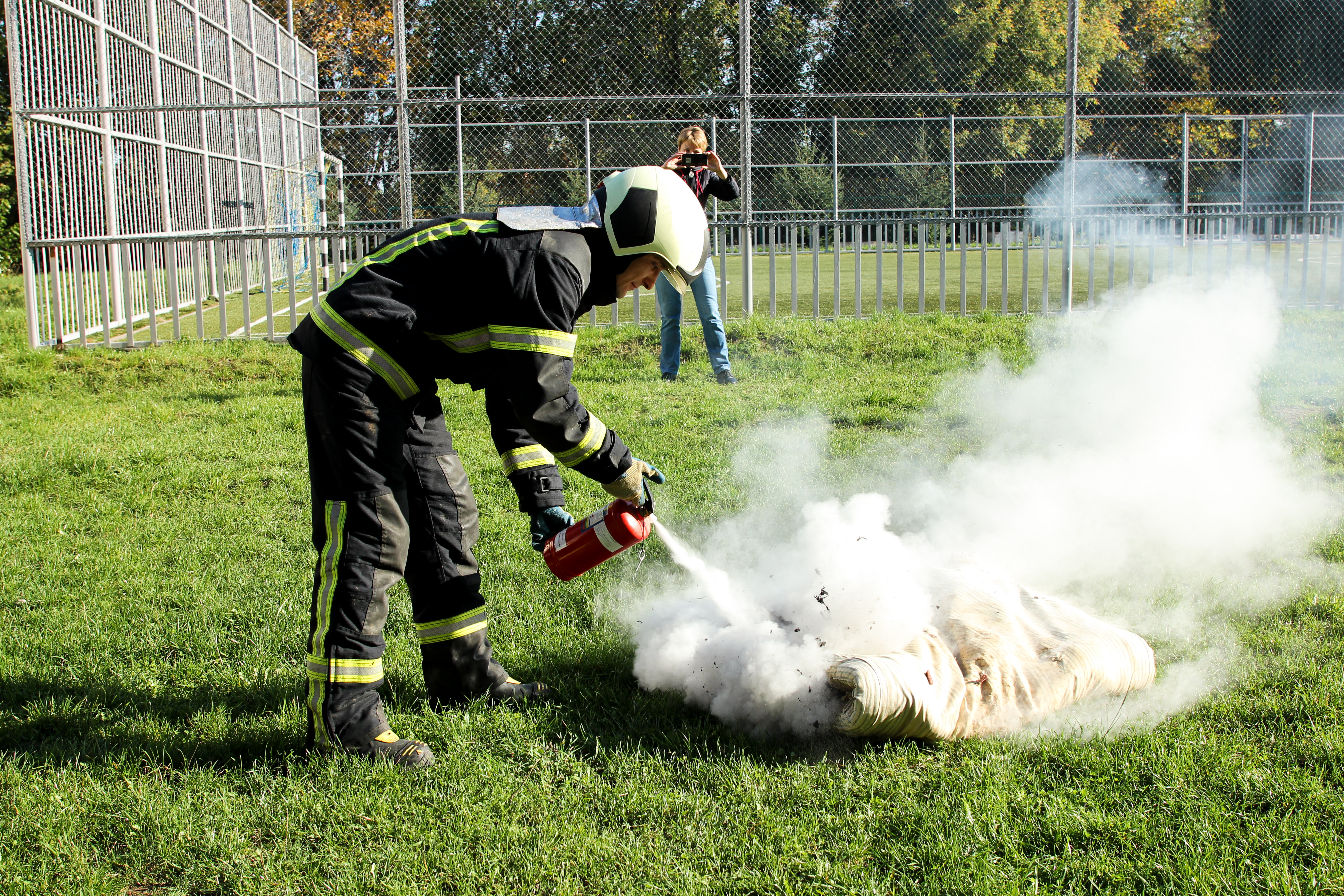












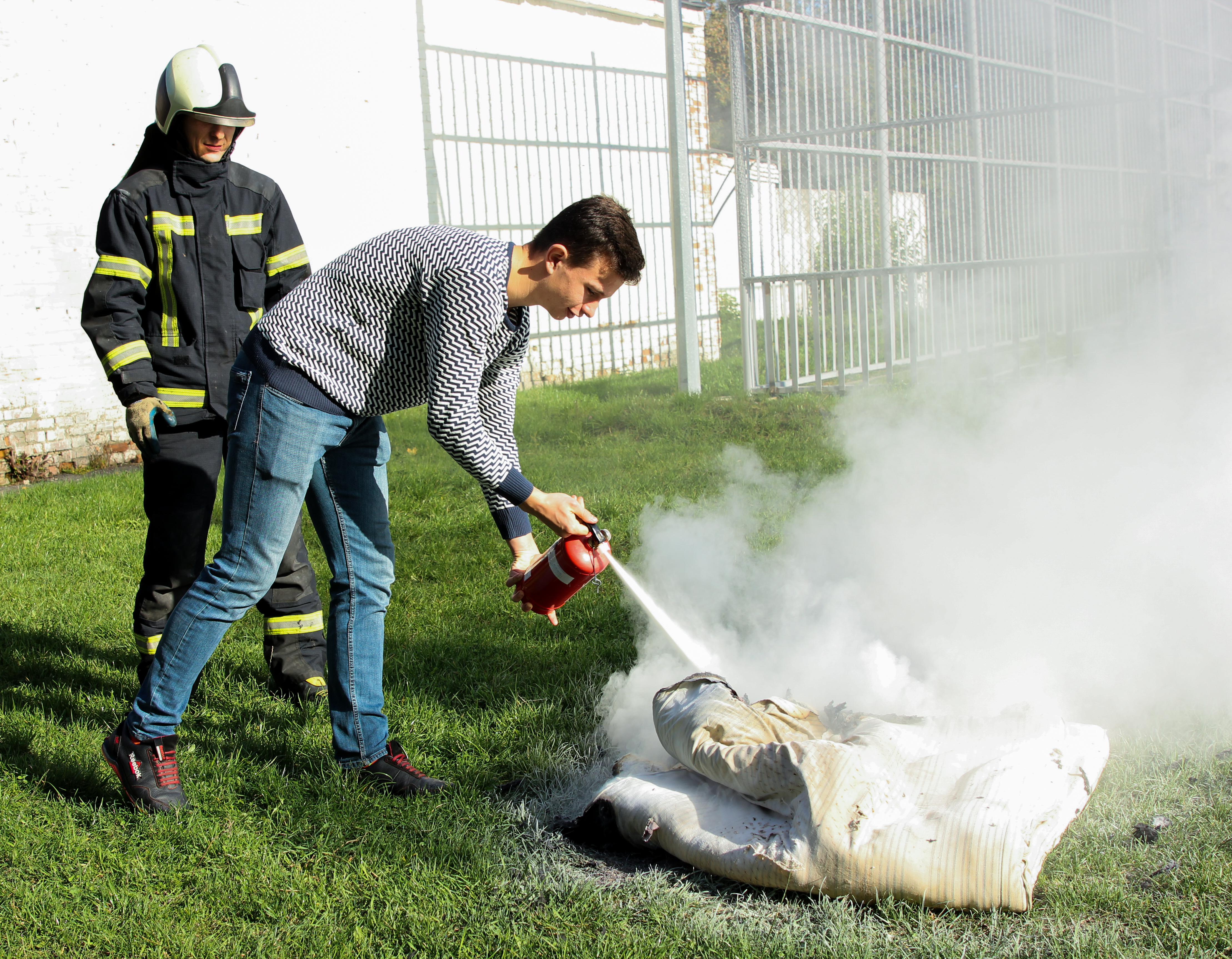
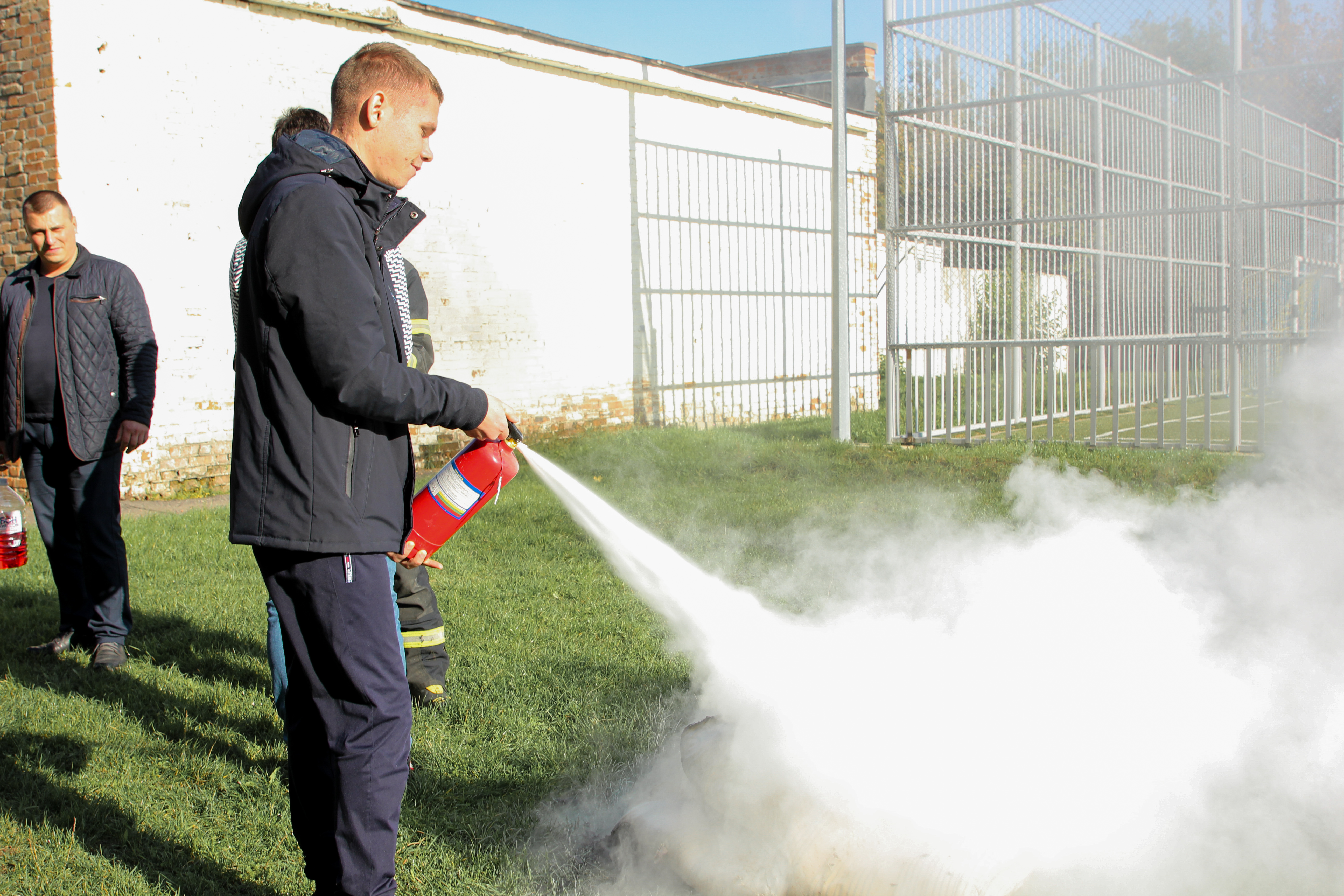
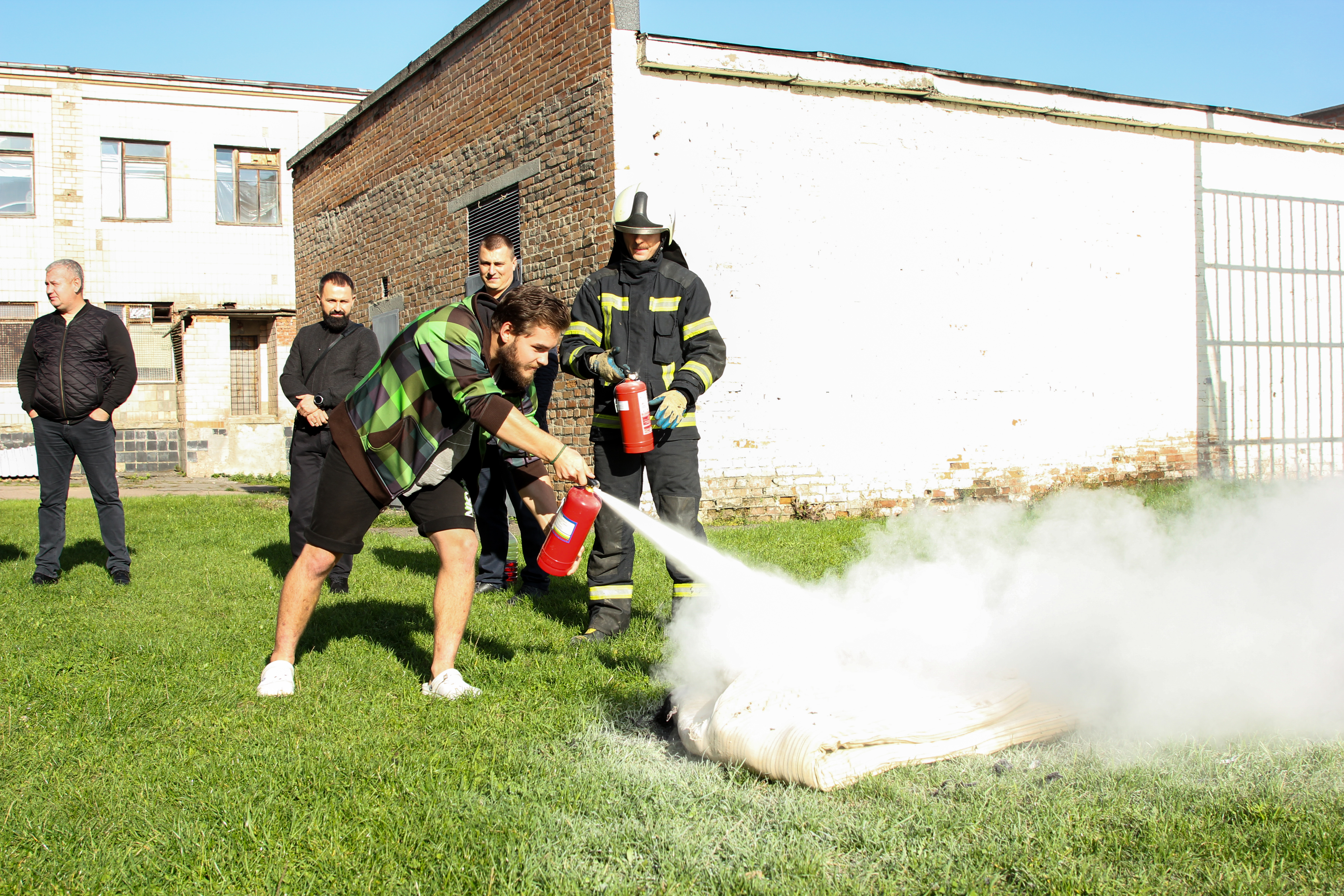






It should be recalled that the evacuation exits in the campus have been repaired and equipped with spare keys, and during the past fire safety trainings, students learned how to quickly evacuate the dormitories.
Media Center of
National University “Yuri Kondratyuk Poltava Polytechnic”


